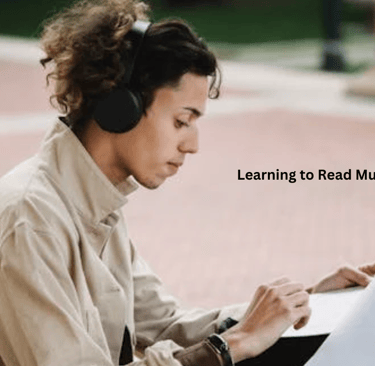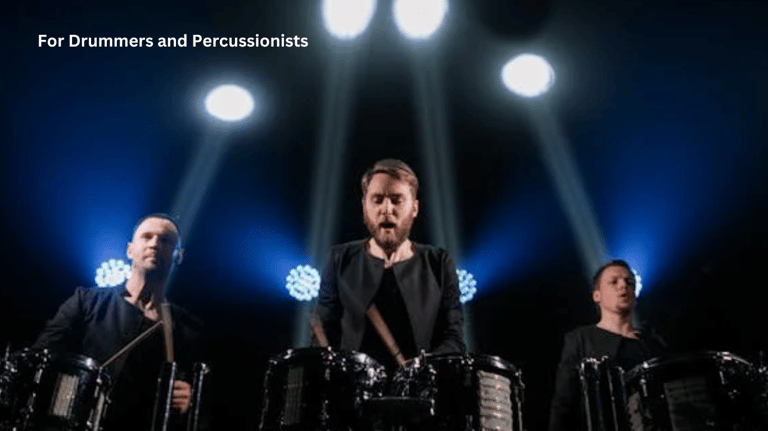Learning to Read Music Beginner Books for Aspiring Musicians
1/24/20255 min read


"Learning to Read Music: Beginner Books for Aspiring Musicians"
This means learning how to read music and opening up the world of melodies, rhythms, and harmonies. Knowing the basic symbols of music notation for a musician-to-be, crossing through one culture and the universal barrier in navigating instruments with individuals, would initially seem overwhelming. Yet, given proper resources, this can become manageable and extremely rewarding. Next up are the beginner books that form another essential part of this whole process because they will lead you step by step through exercises along with practical hints about how you might read a musical score, so let us get started: how you learn to read by yourself and find some excellent beginner's books to encourage your progress from there.
The Theory of Reading: The Basics of Notation
Let's easily define what it is to read music before looking at books. Reading music is symbolic interpretation and putting symbols into sound. Symbols residing within the staff are notes, rests, dynamics, and articulation marks. Okay, so that kind of gives us a heads-up on learning some important things.
The Staff and Clefs: The staff has five lines and four spaces. It shows the look of the two significant clefs that determine the range.
Notes and Rhythms: All notes have a pitch and a time. Knowing note values is crucial.
Key Signatures and Scales: This will tell in what key one will play the composition and if they play the note sharp or flat.
Time Signatures: This will give one a measure, that is, how many beats are present in a particular measure and which note receives a beat.
Using all this for thought, the novice musician can now read through sheet music and play for himself.
Why use beginning books?
Such beginner books are well organized and will instruct the reader to break down ideas into simple pieces so the student will not get lost and confused. Such books may contain exercises, drawings, or pictures that help the student internalize the concept. Because most beginner books are written as specific instrument pieces, what is learned will easily apply to your musical goals.
Advantages of Beginner Books:
Gradual Building Up: Concepts are built up gradually from a good foundation in books.
Exercises: Repetition is the key to learning music, and books offer exercises for the Building up of skills.
Visual Aids: Diagrams and examples of notation make abstract ideas concrete.
Motivation: A feeling of accomplishment is achieved when a book is completed and learners desire to continue.
Books for Beginners Aspiring Musicians
General Music Reading
"Basic Theory of Music" by Hal Leonard
It contains all the information about music theory and notations a student should know. Its contents apply universally to younger learners or users of any musical instrument. More thrilling exercises supported by Web resources are also considered, particularly for freshmen as they embark on the journey of interpreting this language of sound.
"Alefred's Essentials of Music Theory" by Andrew Surmani, Karen Farnum Surmani, and Morton Manus. These are workbooks and ear-training CDs that are super for learning from a multi-sensory perspective. They are a good source, certainly for the newbie, and they give the nuts and bolts of reading music notation.
"How to Read Music in 30 Days" by Matthew Ellul
It will give speedy results for students learning to exercise the mandatory lessons as early as possible. It is not rocket science but only practical exercise; therefore, it is the most desirable material for a beginner who wants to begin with something as early as possible.
For Piano Players
"Bastien Piano Basics: Theory and Technic" by Jane Smisor Bastien
These are piano start books that aid work in theory through technical exercises. They are suitable for young people and even adults who need to learn how to play the piano.
Most straightforward Piano Course by John Thompson Basic John Thompson
This oldie-but-goodie can teach reading music with enjoyable pictures, making it more intuitive for kids. It should be used gradually but steadily to get a proper feel for its foundation.
Faber Piano Adventures, by Nancy
Another excellent collection is because it presents the students with a fascinating repertoire and associated techniques and theories with the repertoire to be played. These vary in different levels of approach or extent in any age, therefore appropriate in any extent and discipline for these.
For Guitarists
Will Schmid and Greg Koch, "Hal Leonard Guitar Method"
This tablature, accompanied with the standard notation will be the helper of any beginner reading up standard form with easier steps.
It's a book classed by itself when talking of guitar students reading from reading the note through the chord progression, in layout design exercises with the progressively working process that will make the book the highly popular recommendation choice for a prospective guitarist.
It's a guitar-oriented book. The music reading introduced there is applied directly to the instrument. That will prove perfect for someone who wants to begin with some classical repertoire.
For Vocalists
"Sight Singing Made Simple" by David Bauguess
Singers are required to sing by ear. This book coaches singers to get on track at the right time. These pitch recognition and rhythm reading exercises would be helpful in the singing process.
Andy Beck, Karen Farnum Surmani, Brian Lewis. "Sing at First Sight
This book contains all that falls in singing and music theories that will be used in every singer's need to read music. "The Singing School Handbook" by Michelle James
It is a book that offers a combination of reading and vocal practice all in one book. Children singing choirs and school settings are good when rehearsing from the pages of these books.
Strings
"Suzuki Method: Violin Book 1" By Shinichi Suzuki
It is an ear-reading method but also absorbs music-reading into lesson regimens. Most violinists prefer playing according to Suzuki standards set down in practice sessions.
"Introducing the Positions" by Harvey S. Whistler
Book for the advanced beginner to get from rudiment note reading, all the way on violin and viola, to higher mastery positions
For Drummers and Percussionists
"Progressive Steps to Syncopation for the Modern Drummer" by Ted Reed
This is a time honored approach of the age to introducing reading rhythm and syncopation for drummers.
"The Drummer's Reading Workbook" by Bobby Gabriele
This is a perfect primer for anyone who wants to learn drum notation and rhythms.
Success Tips
Reading music is one of those skills that takes time to develop. Patience is the key here.
One has to practice regularly. Even 10-15 minutes a day can make a lot of difference.
Begin with simple pieces, then gradually work up.
Flashcards. Note and rhythm flashcards are incredibly helpful in memorizing.
Play along. An app or recordings can be used to play the exercises in your book.
Having a teacher or mentor could also be good, providing very valuable feedback and support.
Conclusion
Reading music is just that: one of the adventures by which one's door will open to endless supplies of creativity and expression. Well, there's a way for every emerging musician from a stress-free mind about that path; yes, even the pianists, guitarists, vocalists, and even drummers. Just recall that enjoying the journey and the little victories within the process is always best. However, the music goes beyond the actual sounds of the notes; it speaks about our glee and connections.







